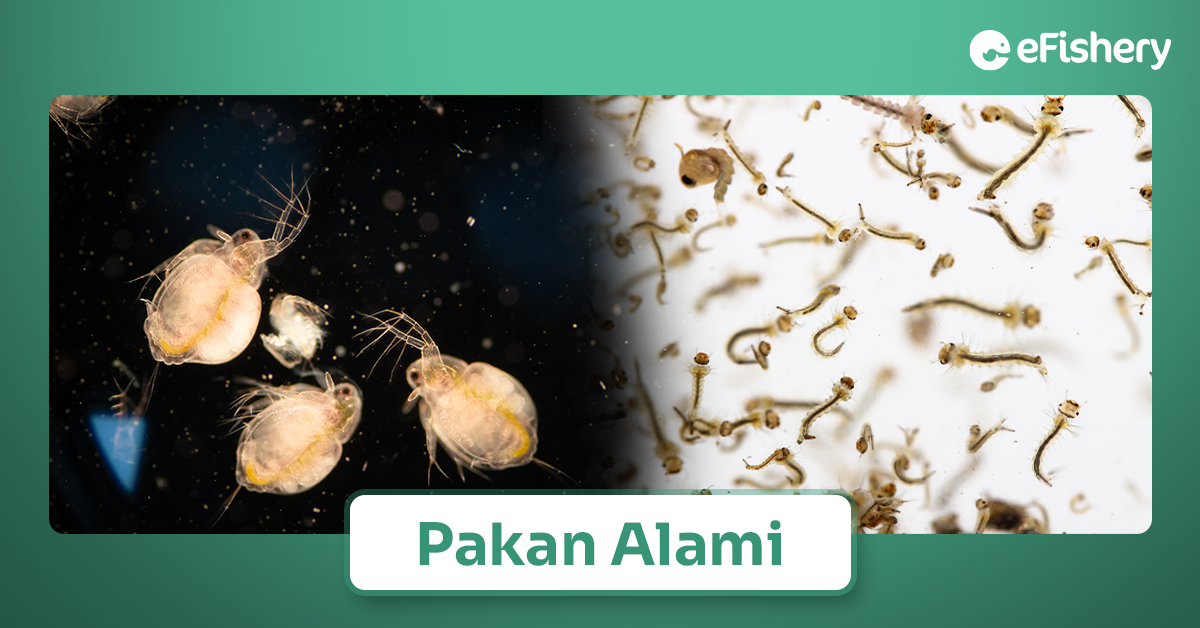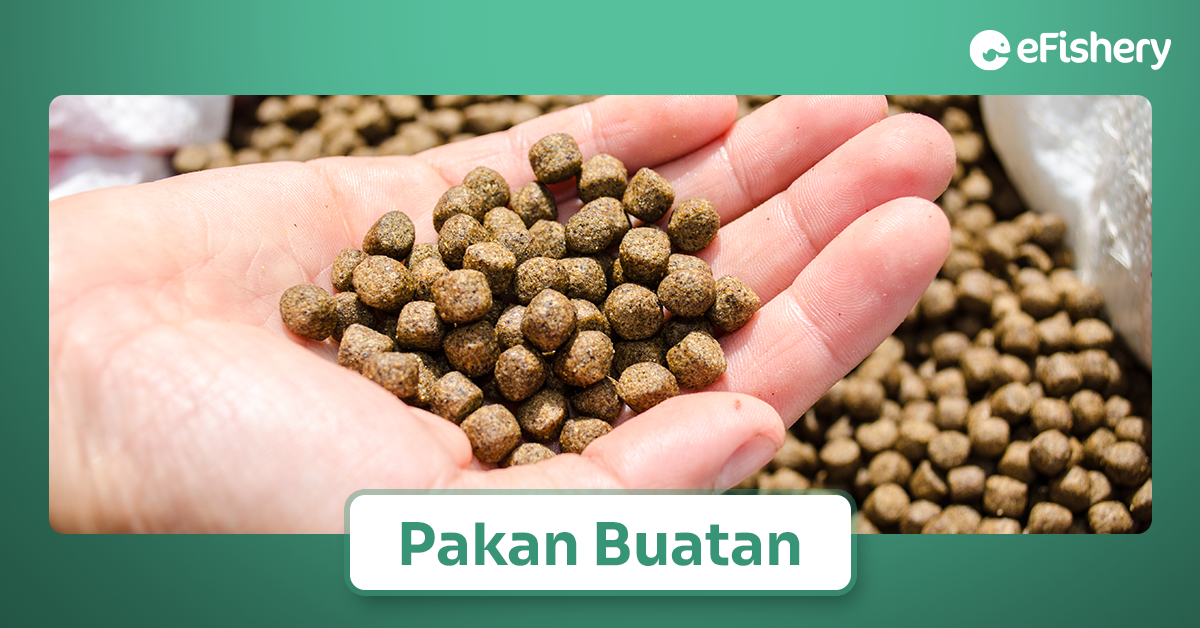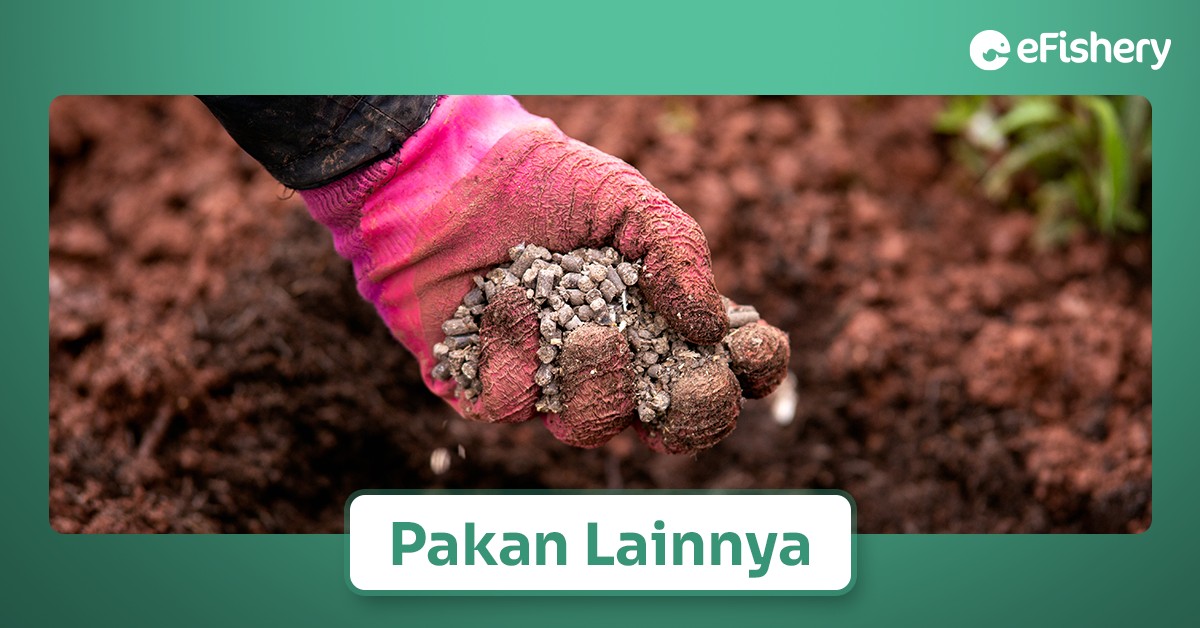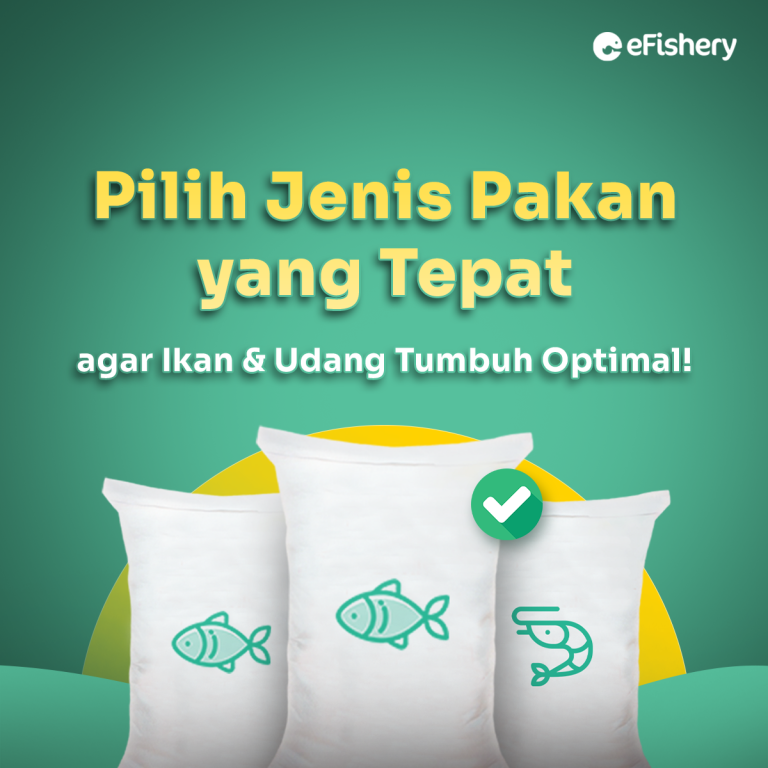Feed contributes around 80% of cultivation capital costs, both fish and shrimp. However, cultivators often find the fact that the feed costs incurred are not proportional to the benefits they get.
So, what's the problem?
The problem lies in feed management, and one of the most important feed management factors is choosing the right type of feed for your cultivation.
Types of Feed for Fish & Shrimp
Before choosing suitable feed, farmers need to know the types of feed that are available and commonly used for fish and shrimp farming.
The feed for cultivating tilapia, catfish, or vannamei shrimp at different cultivation ages is of course not the same.
Let's take a peek at the various types of feed available for your cultivation!
Natural Feed

Natural feed is feed that is not processed or taken directly from nature. Natural food can be in the form of animals or plants. To be sure, natural feed is not factory-made or in the form of pellets.
Some examples of natural food for fish are silkworms, earthworms, insect larvae, water fleas, banana leaves and taro leaves. For shrimp farming, farmers often use mosquito larvae or plankton as natural food.
Natural feed is suitable for small-scale cultivation or personal needs. The price of natural feed is calculated to be very cheap. However, fish growth is very slow compared to when using manufactured/artificial feed.
For intensive or super intensive cultivators, natural feed is often used as additional feed, not the main feed. However, cultivators must also be vigilant because natural food can become waste and contaminate pool water if given carelessly.
Artificial Feed

As the name suggests, artificial feed is feed made from processed natural ingredients, processed so that it is in the form of pellets or powder. Usually, artificial feed is made from various nutritious ingredients for fish and shrimp, so it is more effective in accelerating the growth of aquaculture.
Based on its origin, there are two types of artificial feed, namely:
Homemade Feed
Feed made by the cultivator himself. This feed is rarely used because the manufacturing process is complicated and it is difficult to find good raw materials. In addition, if you do the math, the manufacturing costs are higher when compared to buying factory feed.
Manufacturing Feed
As the name implies, manufactured feed is feed made in bulk by a feed factory. Usually, this type of feed is sold by local feed agents who work together/become partners with feed manufacturing companies. This type of feed is sold per bag.
Based on the shape, there are three types of artificial feed, namely:
Small Granular Feed (pellets)
The feed most often used by cultivators. In each grain, all the nutrients needed by cultivation are complete, which greatly facilitates the Cultivator.
Broken Grain Feed (crumbles)
Usually, this type of feed is broken pellet feed. With a smaller size than pellets, this feed can be eaten more easily.
Flour Feed (mash)
The easiest feed to give and can be purchased in the form of fine flour.
Based on its nature, there are two types of artificial feed, namely:
Floating Feed
As the name implies, floating feed will float on the surface of the water when spread. Usually, floating feed is made with a more complete nutritional formula for cultivation, so that growth is more optimal. Due to its floating nature in the water, this type of feed helps farmers control the amount of feed spread and not eaten by fish/shrimp.
Sinking Feed
Sinking feed is feed that will sink to the bottom of the pond. The stocked feed will float for a moment before sinking into the water.
Other Feed

Other feeds are types of feed that are not taken directly from nature but are also not manufactured feed. Some examples are chicken tiren (dead yesterday) or chicken droppings which are often used as feed for catfish.
Because it is seen as unhygienic, this feed has begun to be abandoned by cultivators.
Of course, the type of feed that you choose for fish/shrimp farming must be adjusted to the needs, age of cultivation, and frequency of feeding. The form of feed given must be according to the age and mouth opening of the fish and shrimp. If the size is not suitable, fish or shrimp will have difficulty consuming the feed given.
Those are the various types of feed available to farmers and are often used to cultivate fish and shrimp. Look forward to the next SIAR article from eFishery on our blog!
Need Help Regarding Shrimp Cultivation Business?
Fill in your personal data in the following form. Our team will immediately contact you via the number cellphone attached. Make sure the data entered is correct.
